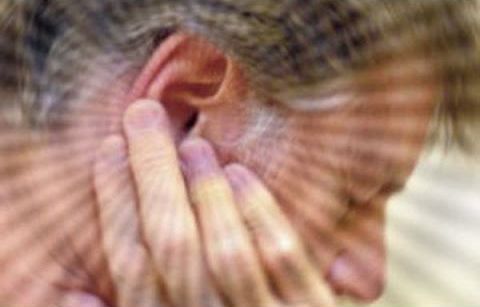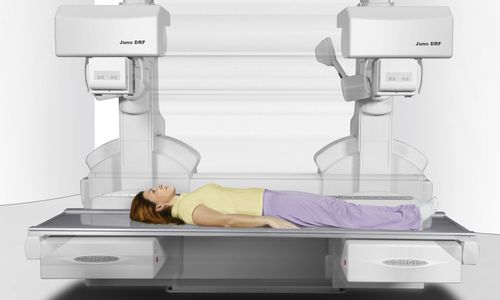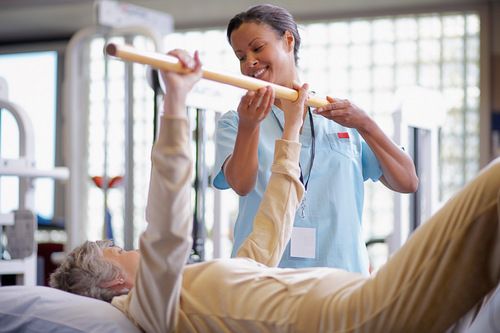Causes and methods of treatment of noise and ringing in the head with osteochondrosis of the neck
Noise in the ears that occurs with osteochondrosis of the cervical region requires mandatory treatment. This symptom indicates a violation of intracranial pressure, which is fraught with damage to the vascular wall, and as a result, a stroke. The tinnitus that accompanies cervical osteochondrosis also indicates a violation of the trophism of the inner and middle ear, which means it threatens with deterioration and even complete loss of hearing. The discussed symptom can cause depression, dramatically reduce the patient's performance.
Causes of an unpleasant symptom
Osteochondrosis of the cervical spine rarely provokes tinnitus at an early stage. The appearance of a symptom indicates the progression of the disease, the presence of muscle spasms, the already held pinching of the veins and arteries. There are two assumptions about the causes of tinnitus against the background of cervical osteochondrosis:
- Option one. Pinched arteries and veins of the cervical region leads to disruption of the trophism of brain cells. The nerve endings responsible for hearing do not receive enough nerve impulses from the medulla oblongata, as a result of which they themselves begin to create rhythmic signals. They are regarded by the hearing aid as high-frequency noise.
- Option two. Violation of cerebral circulation at the level of the cervical region causes spasm of blood vessels and arteries, a sharp change in the diameter of their lumen in different areas. Blood flowing through vessels with a normal diameter forms vortices when it changes, which is felt as noise in the ears and head.
 Noise in the ears with osteochondrosis indicates the neglect of the disease.
Noise in the ears with osteochondrosis indicates the neglect of the disease.
With osteochondrosis, tinnitus (subjective noise without an external source) is felt as an extraneous monotonous sound, gradually acquiring the characteristics of an obsessive one. At the same time, the perception of objective external noise worsens. The patients themselves say in this case that osteochondrosis lays the ears.
Additional symptoms: completeness of the picture
Not only tinnitus speaks of the progression of osteochondrosis. A number of other symptoms, provoked by pinching of the vegetovascular bundle of the cervical spine, join the unpleasant sensation.
- Severe pain in the head, localized in the back of the head or superciliary zone.
- Visual impairment - with osteochondrosis, this is often a feeling of flickering, the so-called "flies before the eyes."
- Dizziness, often ending in fainting.
- Numbness of the tongue.
- In the later stages of the development of osteochondrosis, swallowing disorders occur.
Flies in the eyes with cervical osteochondrosis appear due to ischemia of the optic nerve and retina.

Along with tinnitus, a patient with cervical osteochondrosis develops headaches and dizziness.
Tinnitus accompanying cervical osteochondrosis is different. It appears as:
- Long high-pitched whistle.
- Annoying squeak.
- Low frequency hum.
- Hiss.
According to the stories of patients, if it rings in the ear, then soon it will be completely blocked, and the ability to hear will temporarily decrease.
Necessary examinations for noise from osteochondrosis
If tinnitus appears with cervical osteochondrosis, the symptom should be reported to the doctor as soon as possible. The addition of such symptoms may indicate the progress of osteochondrosis and the need to increase the intensity of therapy. The symptom of tinnitus often determines the specificity of the diagnosis, allowing for the first time to establish cervical osteochondrosis as a diagnosis and the main cause of tinnitus.
Tinnitus requires the following diagnostic studies to determine the disease that provokes it:
- Doppler ultrasound diagnostics of the neck and head. Allows you to assess the speed of blood flow in the veins and arteries, the presence of blood clots, signs of atherosclerosis, the main pressure zone.
- X-ray examination. It plays a key role in determining cervical osteochondrosis, allows you to assess the degree of degenerative-dystrophic changes.

X-ray examination plays a key role in determining cervical osteochondrosis
- Magnetic resonance imaging of the neck and head. Gives a comprehensive view of the state of the cervical spine, skull bones, brain, circulatory system and innervation. MRI is also done to differentiate the noise provoked by osteochondrosis from that generated by diseases of the middle or inner ear.
- Audiological diagnostics. Determines violations of the auditory analyzer.
How to get rid of tinnitus with cervical osteochondrosis
Treatment of tinnitus as a symptom requires treatment of the disease provocateur. If the noise is provoked by osteochondrosis, then a set of therapeutic measures will be required aimed at:
- Elimination of the inflammatory process in the cervical spine.
- Slowing down and stopping degenerative-dystrophic lesions of the joints.
- Elimination of pinched nerve roots.
- Restoration of the structure of the cartilaginous tissue of the cervical spine.
- Normalization of blood flow in the cervical region.

Therapeutic exercise is an integral part of the spine rehabilitation course.
To fulfill all these tasks, an integrated approach to the treatment of cervical osteochondrosis and the integration of all available methods of treatment into a single wellness program is required. It includes:
- Reception of special medicines.
- Carrying out physiotherapy procedures.
- Manual influence (massage).
- Therapeutic exercise.
- Other methods agreed with the doctor (balneological therapy, hirudotherapy, folk methods of treatment).
A detailed consultation in all areas of treatment is given by a specialist after research and confirmation of the diagnosis.
Medical
The selection of drugs to eliminate tinnitus is done by the doctor, based on the stage of cervical osteochondrosis, the symptoms of its manifestation, concomitant diseases. The list of appointments includes several drugs:
- NSAIDs. Eliminate the inflammatory process in the cervical spine.
- Muscle relaxants. They relieve spasm of the cervical muscles, which also leads to infringement of blood vessels.
- Vitamins of group B. Necessary for the restoration of nerve fibers, improve the condition of the vascular walls, normalize metabolism.
- Chondroprotectors. They slow down degenerative-dystrophic processes in cervical osteochondrosis, contribute to the restoration of cartilage and vertebrae.
- Stimulators of cerebral circulation. They have the ability to relieve vasospasm, improve coronary circulation, which helps to restore brain trophism and eliminate tinnitus.

The scheme of drug therapy for cervical osteochondrosis is the same, but the selection of drugs from all groups should be done by the doctor, focusing on the individual characteristics of the course of the disease in the patient.
Exercises
To eliminate the noise in the head with osteochondrosis of the cervical region, it will be necessary to restore the patient's physical activity. It is physical exercises that help relieve spasm of the cervical muscles, improve blood circulation, and slow down the rate of development of spinal deformities.
Exercise therapy for the cervical region includes a small list of easy-to-perform exercises. At the beginning of therapy, they are done in a sitting position to avoid dizziness and a possible fall. Basic rules of exercise therapy for the cervical region:
- The load is increased gradually.
- The intensity of training should be moderate.
- All exercises are performed smoothly, without jerking.
- If you experience discomfort, the exercise is postponed for several hours.
- Exercise therapy is done daily, regularly, throughout the entire period of treatment and at its end.
The main exercises aimed at restoring blood circulation in the cervical region and normalizing brain trophism:
- Slow tilts of the head to the right and left shoulder.
- Turning the head to the extreme point to the right and left.
- Tilts back and forth.
- Circular movements of the head clockwise and counterclockwise.
All exercises should cause a feeling of the work of the cervical region.
Massage
Cervical massage will help to cure noise in the ear with osteochondrosis by improving blood circulation. It must be done by a qualified person. The number of sessions is from 10 to 20. If it is not possible to visit a massage parlor, you can perform a light neck massage on your own. Basic principles:
- Direction of movements from the base of the head to the periphery to improve the outflow of blood.
- The impact is carried out not with brushes, but with fingertips.
- Manipulation involves gently rubbing the muscles in a circle.
- Do not press or press the muscles or spine, so as not to provoke injury.
Cold and hot shower
A contrast shower will help improve blood flow in the vessels of the neck and brain and eliminate ear congestion with cervical osteochondrosis. The impact zone is the back of the head, the front and back of the neck, shoulders, and collarbones. Begin exposure to warm water, gradually reducing its temperature to cool, but comfortable for the body. When treating cervical osteochondrosis, it is unacceptable to use too cold water for a contrast shower, so as not to provoke inflammation of the spine. In one procedure, the temperature should change from warm to cold about 15 times.

A contrast shower will help eliminate ear congestion with cervical osteochondrosis.
ethnoscience
If, with cervical osteochondrosis, the ears are laid too often or the constant noise does not give the patient rest, the doctor may allow the use of one of the popular methods of dealing with annoying ringing.
- An onion stuffed with fresh cumin is baked in the oven. Juice is squeezed out of it through gauze, which is dripped into both ears twice a day, 3 drops each.
- 100 g of beets are rubbed on a coarse grater, mixed with a spoonful of honey, boiled in a glass of water for fifteen minutes. The composition is applied to a gauze bandage, applied to the ear.
- Mix a kilogram of flowering dandelion and 2 kg of sugar. The mixture is stirred until the crystals are completely dissolved. A spoonful of syrup is mixed with four tablespoons of water, taken orally three times a day.
Alternative treatment, used as an additional method of therapy, helps to eliminate tinnitus much faster. It is important to remember that any folk prescription must be agreed with the doctor.
Osteochondrosis of the cervical region causes tinnitus very often. It is important not to start the disease, but to start its treatment in a timely manner under the supervision of a specialist. With this approach, tinnitus will be eliminated, and osteochondrosis will recede. The symptom of tinnitus cannot be eliminated without treatment of the underlying disease that caused it.














